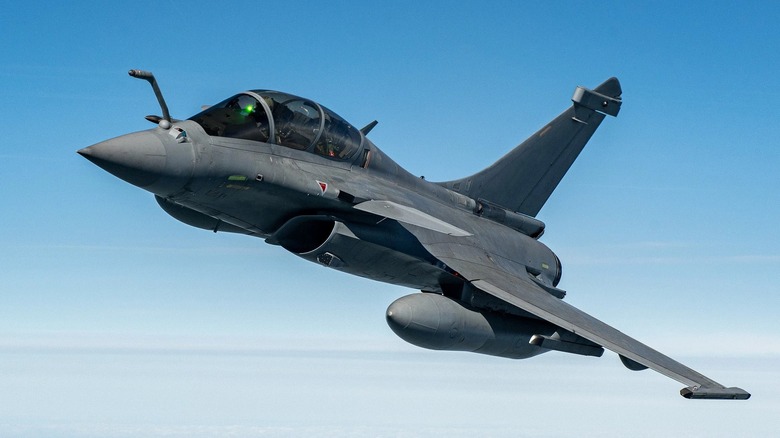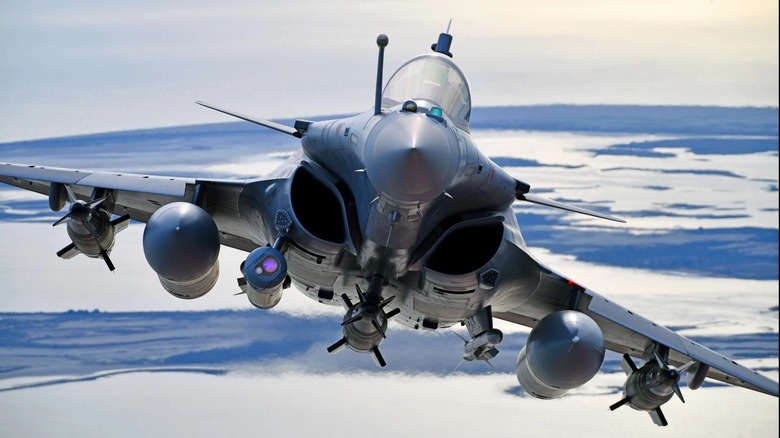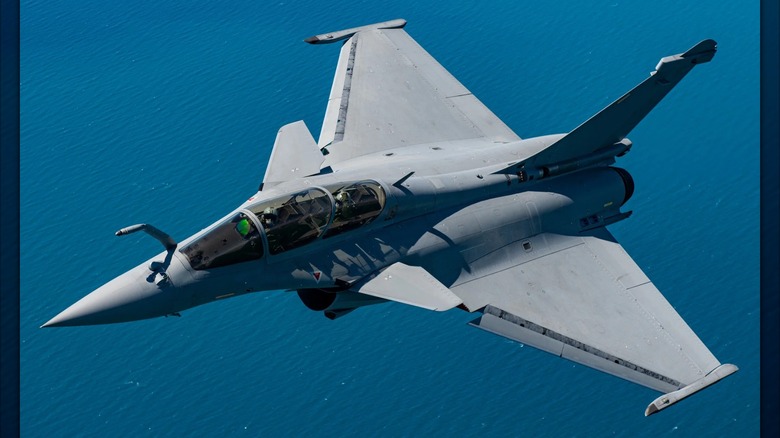The 300th Rafale Has Been Completed - Here's What To Know About The Dassault Fighter Jet
Dassault Aviation has completed production of its 300th Rafale fighter jet, boosting both the profile of the company and the already-formidable French military. Dassault is a French aeronautics manufacturer that builds both military aircraft and private business jets since its founding nearly a century ago, and has delivered over 10,000 aircraft to more than 90 different nations. A vast majority of Dassault's 14,000+ employees are based in France, and the company boasts over 1,000 active military aircraft in service. The company also works on space systems and military drones, but the delta-wing Rafale is one of its most notable creations.
The Dassault Rafale is a twin-jet fighter that is highly versatile — capable of reconnaissance and air defense, as well as in-depth and anti-ship strikes. In addition to being a key component of France's armed forces, Dassault also sells Rafale jets to eight other countries — including India, Indonesia, Egypt, Qatar, and Greece — and has another 233 orders it plans to fulfill. The manufacturer plans to build four new jets per month. One reason the jet is so popular is that, when comparing the Rafale with the Eurofighter Typhoon, the Rafale is considerably cheaper — by over $70 million per plane. However, the larger reason France relies heavily on the Rafale is that, between its agility, armament, and versatility, it's one of the most formidable fighter jets ever made.
The Rafale has a strong center-of-gravity and a wide range of weaponry
The Dassault Rafale is an incredibly agile fighter, partly because Dassault designed its canards close to the delta wing, increasing its center-of-gravity. It's also very lightweight, weighing 10 tons without fuel, thanks to the composite materials used in its durable airframe. The jet is 50 feet long and its wingspan is over 35 feet across. The Rafale has a service ceiling of 50,000 feet and, capable of twin thrust of 7.5 tons each, can fly up to Mach 1.8. Adding to its versatility is the fact that the Rafale comes in both one-seat and two-seat variants, and is able to take off from both carriers and land-based runways. Its approach speed is less than 120 knots, and it has a landing ground run of 1,500 feet when not using a drag-chute.
As for armament, the Rafale is built with 14 hard points, with five capable of carrying drop tanks or heavy ordinance. Its total external load capacity is over 20,000 pounds. Dassault has designed the jet to be customizable and interoperable, and it's cleared to run a range of various weapons, including METEOR long-range air-to-air missiles and SCALP long-range stand-off missiles.
It's also cleared for MICA air-to-air missiles for both beyond-visual-range (BVR) and within-visual-range (WVR) interception, combat and self-defense in heat-seeking active-radar, HAMMER (Highly Agile and Manoeuvrable Munition Extended Range) modular, rocket-boosted air-to-ground precision-guided weapons, AM39 Exocet anti-ship missiles, laser-guided bombs with various warheads and seekers, and unguided conventional bombs, as well as 30-millimeter cannons with up to 2,500 rounds. The jet is also capable of buddy-buddy refuel missions.
France's jet is also equipped with advanced radar
The Dassault Rafale is just as useful on recon missions as it is for combat ones, and uses an advanced radar system equipped with both look-up and look-down detection with multi-target tracking. The system also generates a 3D map in real-time when pilots are flying blind — the only fighter aircraft in the world that currently offers this. On top of that, pilots and weapon operators can use advanced helmet-mounted displays for additional information.
France first began operating the Dassault Rafale in 2004, when the first jets rolled off the assembly line and entered naval service. Two years later, the French Air Force began using the Rafale. While France's older first-generation ships can still take down advanced American aircraft carriers, its armed forces still have a strong need for modern aircraft and naval vessels — especially in a tumultuous political climate. France is already collaborating with other European nations on a next-generation Future Combat Air System (FCAS) for even more advanced warfare and defense, but don't expect the Rafale to be retired anytime soon. Dassault is still building newer variants of the twin jet, which will likely join France's navy and air force once built.


